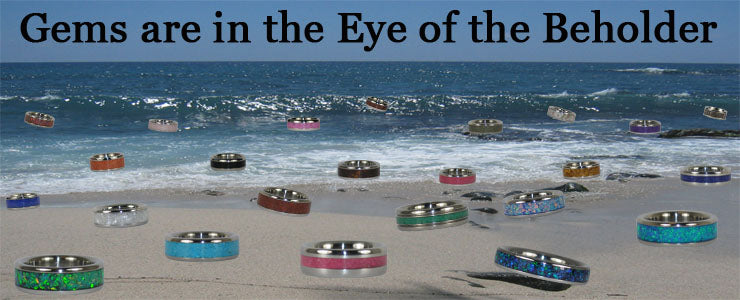Gems and Minerals — What's the Difference?
Let’s take a trip back to high school. Just remember sitting in the 10th grade science chair and only listening to half of what the teacher is saying, the other half of the time you are trying to figure out what your plan is going to be when you get out. The teacher up in front of class is talking about the difference between gemstones and minerals. Actually, he is telling you how to tell if a mineral is a gem, not the other way around, because all gems are minerals.
Scientifically, minerals are defined as solid geologically formed substances with unique physical and chemical characteristics. Historically, gems were considered gems if they were hard nonmetallic minerals used in jewelry. Gemstones are basically identified by humans and classified by what we think is beautiful. They are diamonds and garnet and other stones that are appealing to the eye.
Some precious gems are not minerals but organic matter; for example a pearl. A pearl is from an oyster and is one of the only gems to come from a living organism; the others are Jet and Amber which come from trees.
Another classification that determines if a mineral is a gemstone is the rating on the Mohs scale or the scale that determines the hardness of a stone. Minerals that rank higher on this scale are used as gemstones because of their durability. When making a piece of jewelry, you want to use a gemstone or mineral that has long lasting durability. Ruby and Sapphire are amongst the highest scoring gems as well as Garnet and Peridot. Malachite and Sugilite are other gemstones also ranking high on the scale. Opal and Turquoise are some of the most eye appealing minerals that are not as hard as other gemstones but do have the hardness sought after in quality jewelry.
Choosing the materials used in custom jewelry can be a balance between beauty and practicality. Most women would love to have diamonds in everything they wear, which is both beautiful and practical because diamonds go with everything. A recent jump in sales would indicate that Opal is the new diamond for its rarity and variety of color. The newest trend is synthetic opal which is real opal developed in a lab to achieve new color and fewer imperfections.
When choosing minerals for jewelry, you have a multitude of colors to choose from to make the piece unique and original, whether it is a gemstone or mineral that is formed in the ground, created under water, or grown in a lab. They are all available here at Hawaii Titanium Rings!





